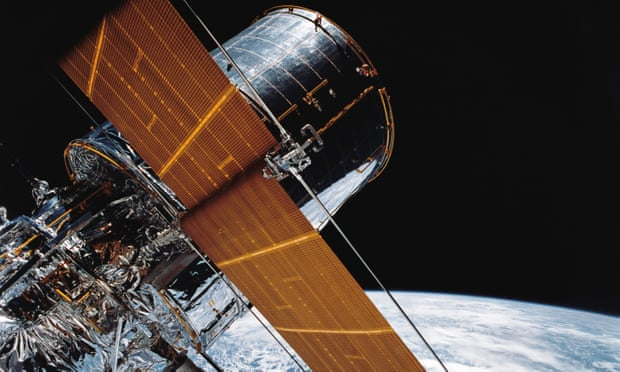Nasa said the camera stopped working on Tuesday but three other science instruments were still operating and able to continue celestial observations.
The news came as it emerged that Hubble has discovered the brightest quasar ever seen in the early universe, with the brightness of about 600 trillion suns.
The newly discovered quasar, catalogued as J043947.08+163415.7, is so old that the light from it started its journey when the universe was only about a billion years old. There are hopes it could provide an insight into the birth of galaxies.
A quasar is the extremely bright nucleus of an active galaxy and its powerful glow is created by the incredible amounts of energy released by gas falling towards the supermassive black hole at its centre.
Tuesday’s hardware failure happened in the telescope’s wide-field camera, which was installed by spacewalking astronauts in 2009. The camera has backup electronics that can be called into action if necessary, according to Nasa.
The camera has captured stunning images of stars, galaxies stretching far back in time and assisted in deep sky surveys. It has also studied objects in the solar system, discovering some of the tiny moons around Pluto, as well as a 14th moon around Neptune. It takes pictures in both visible and ultraviolet light, as well as near-infrared.
Orbiting 350 miles (560km) above Earth, Hubble was launched in 1990 and visited by space shuttle astronauts for repairs and upgrades five times.
It recently stopped working altogether for three weeks because of a problem with its gyroscopes.
This is the first time the camera has acted up like this, said Cheryl Gundy, a spokeswoman with the Space Telescope Science Institute in Baltimore, which handles science operations for the telescope.
“Nasa is trying to pull together the team to try to diagnose the issue,” Gundy said.
“We would like to have Hubble back up and working as quickly as possible, and Nasa is making that happen,” even with the partial government shutdown, she said.
More about: #NASA
















































